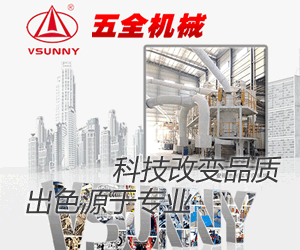How does the Zeta-APS measure particle size distributions?
Zeta-APSеҰӮдҪ•жөӢйҮҸзІ’еәҰеҲҶеёғпјһь/span>
The Zeta-APS accurately measures acoustic attenuation (dB/cm) vs. frequency of sound (1 to 100 MHz) of colloidal dispersions. These measurements are commonly referred to as Acoustic Attenuation Spectroscopy. The Zeta-APS also simultaneously measures speed of sound vs. frequency, percent solids, pH, conductivity, and temperature. The attenuation level, as well as, the shape of the acoustic attenuation curve shape is related to the particle size distribution (PSD). PSDвҖҷs are calculated from the acoustic attenuation data using software developed and patented by Lucent Technologies. This Lucent Technologies software is based on the Epstein and Carhart (later refined by Allegra and Hawley) theory of acoustic attenuation.
Zeta-APSеҮҶзЎ®жөӢйҮҸдәҶиғ¶дҪ“еҲҶж•ЈдҪ“зҡ„еЈ°иЎ°еҮҸпјҲdB/cmпјүдёҺйў‘зҺҮпј?-100MHzпјүзҡ„е…ізі»гҖӮиҝҷдәӣжөӢйҮҸйҖҡеёёиў«з§°дёәеЈ°иЎ°еҮҸи°ұгҖӮZeta-APSеҸҜд»ҘеҗҢж—¶жөӢйҮҸеЈ°йҖҹгҖҒйў‘зҺҮгҖҒеӣәдҪ“зҷҫеҲҶжҜ”гҖҒpHеҖјгҖҒз”өеҜјзҺҮе’Ңжё©еәҰгҖӮиЎ°еҮҸж°ҙе№ід»ҘеҸҠеЈ°иЎ°еҮҸжӣІзәҝеҪўзҠ¶дёҺйў—зІ’зІ’еҫ„еҲҶеёғпјҲPSDпјүжңүе…ігҖӮPSDжҳҜз”ұLucent TechnologiesејҖеҸ‘并иҺ·еҫ—зҡ„иҪҜ件гҖӮиҜҘиҪҜ件еҹәдәҺEpsteinе’ҢCarhartпјҲеҗҺжқҘз”ұAllegraе’ҢHawleyж”№иҝӣпјүзҡ„еЈ°иЎ°еҮҸзҗҶи®әгҖ?nbsp;
How does the Zeta-APS measure Zeta Potential (ZP)?
Zeta-APSеҰӮдҪ•жөӢйҮҸZetaз”өдҪҚпјһь/span>
The Zeta-APS uses an electroacoustic technique called Electrokinetic Sonic Amplitude (ESA, invented by Matec Applied Sciences) to measure Zeta potential of particles suspended in liquids. The Zeta-APSвҖ Zeta sensor applies short highfrequency (AC) pulses to the sample located within the electrode region of the Zeta sensor. These pulses last about 30 micro-seconds in the frequency range 0.5-3.5 MHz. The particles вҖңjiggleвҖ back and forth due to their surface electric charge which produces an output sound wave of the same frequency as the applied sound wave-provided there is a particle/solvent density difference of at least 2%. The sample can be mixed and/or pumped during the measurement without interfering with the ESA measurement.
Zeta-APSжөӢйҮҸZetaз”өдҪҚзҡ„ж–№жі•иў«з§°дёәз”өеЈ°жҢҜе№…пјҲESAпјүгҖ Zeta-APSзҡ„Zetaз”өдҪҚжҺўеӨҙе°Ҷй«ҳйў‘дәӨжөҒи„үеҶІж–ҪеҠ еҲ°дҪҚдәҺдј ж„ҹеҷЁз”өжһҒеҢәеҹҹеҶ…зҡ„ж ·е“ҒдёӯпјҢиҝҷдәӣи„үеҶІеңЁ0.5-3.5 MHzзҡ„йў‘зҺҮиҢғеӣҙеҶ…жҢҒз»ӯзә?0еҫ®з§’гҖӮз”ұдәҺзІ’еӯҗзҡ„иЎЁйқўз”өиҚ·дјҡдә§з”ҹдёҺжүҖж–ҪеҠ еЈ°жіўзӣёеҗҢйў‘зҺҮзҡ„иҫ“еҮәеЈ°жіўпјҢеӣ жӯӨзІ’еӯҗжқҘеӣһвҖңж‘ҶеҠЁвҖқпјҢзІ’еӯҗе‘Ёеӣҙзҡ„д»ӢиҙЁеҜ№е…¶е°Ҷжңүйҳ»еҠӣзҡ„еҪұе“ҚпјҢиҝҷз§Қйҳ»еҠӣдјҡд»ҘеЈ°жіўзҡ„еҪўејҸд»ҺзІ’еӯҗиЎЁйқўдј ж’ӯеҮәжқҘпјҢз”өеңәеҶ…зҡ„зІ’еӯҗдә§з”ҹеЈ°жіўзҡ„еҸ еҠ пјҢеҪўжҲҗи¶…еЈ°жіўпјҢе…¶жҢҜе№…е°ұжҳҜз”өеЈ°жҢҜе№…пјҲESAпјүпјҢйҖҡиҝҮESAжқҘи®Ўз®—Zetaз”өдҪҚгҖӮйңҖиҰҒжіЁж„Ҹзҡ„жҳҜйў—зІ’дёҺд»ӢиҙЁзҡ„еҜҶеәҰе·®иҮіе°‘дё?пј…гҖ жөӢйҮҸжңҹй—ҙеҸҜд»Ҙжҗ…жӢҢжҲ–жіөйҖҒж ·е“ҒгҖҒь/span>
 1184
1184
 0
0
-
1з…Өж°”жҲҗеҲҶдёҺзғӯеҖјзӣ‘жө?еұұиҘҝеӨ§еһӢжңүиүІйҮ‘еұһз”ҹдә§дјҒдёҡз…Өж°”е·ЎжЈҖйЎ№зӣ®
-
2з…Өж°”жҲҗеҲҶдёҺзғӯеҖјзӣ‘жө?е®үеҫҪеӨ§еһӢй’ўй“ҒеҶ¶йҮ‘дјҒдёҡз…Өж°”йҳІжҠӨз«ҷж°”дҪ“е·ЎжЈҖйЎ№зӣ®
-
3з…Өж°”жҲҗеҲҶдёҺзғӯеҖјзӣ‘жө?йҷ•еҢ—еӨ§еһӢиғҪжәҗеҢ–е·ҘдјҒдёҡж°”дҪ“жө“еәҰдёҺзғӯеҖјзӣ‘жөӢйЎ№зӣ?/a>
- ж— еҚӨдҪҺзғҹйҳ»зҮғжқҗж–ҷдёӯзӮӯй»‘еҗ«йҮҸжЈҖжөӢз»“жһңејӮеёёжғ…еҶөзҡ„еҲҶжһҗ
-
5GB 36246-2018дёӯе°ҸеӯҰеҗҲжҲҗжқҗж–ҷйқўеұӮиҝҗеҠЁеңәең°е…Ёж–Ҷь/a>
- ASTM-D638-2003--дёӯж–Үзү?еЎ‘ж–ҷжӢүдјёжҖ§иғҪжөӢе®ҡж–№жі•
-
7GBT 15065-2009 з”өзәҝз”өзјҶз”Ёй»‘иүІиҒҡд№ҷзғҜеЎ‘ж–ҷ
-
8GB_T2951.41-2008з”өзјҶе’Ңе…үзјҶз»қзјҳе’ҢжҠӨеҘ—жқҗж–ҷйҖҡз”ЁиҜ•йӘҢж–№жі•

- иҮҙеҜҶеҢ–еҺӢеҠӣеҜ№зҹіжҰҙзҹіеӣәжҖҒй”Ӯз”өжұ жҲҗеһӢе’ҢжҖ§иғҪзҡ„еҪұе“Ңь/a>
- EVAеһӢзғӯзҶ”иғ¶д№ҰеҲҠиЈ…и®ўејәеәҰжЈҖжөӢдёҺиҙЁйҮҸжҺ§еҲ¶з ”究
- иҮӘеҠЁзғӯеҺӢжңәзҡ„еҸ‘еұ•и¶ӢеҠҝжҳҜжҖҺж ·зҡ„пјҹ
- з”ЁжҲ·и®әж–Үйӣ в–ҸеҢ–еӯҰеҗёйҷ в–Ҹй“ұ-й“је…ұжІүз§Ҝд№ҷйҶҮеӨ„зҗҶеҗҺSiO2иҪҪдҪ“еӮ¬еҢ–еүӮеә”з”ЁеңЁз”ҳжІ№ж°ўи§ЈеҸҚеә”
- дёәд»Җд№Ҳиҝ‘жңҹеҚ•еЈҒзўізәізұіи§’пјҲCNHпјүзҡ„з ”з©¶иҝӣеұ•еҖјеҫ—е…іжіЁпјһь/a>
- дёәд»Җд№Ҳд»Ӣеӯ”SiO2еңЁиҚҜзү©йҖ’йҖҒйўҶеҹҹзҡ„еә”з”Ёи¶ҠжқҘи¶ҠеӨҡпјһь/a>
- FRITSCHйЈһй©°зҗғзЈЁвҖ”вҖ”дёҚй”Ҳй’ўд»ӢеҜјзҡ„ж°ҙдёӯзҗғзЈЁжқЎд»¶дёӢе®ҡйҮҸH2з”ҹжҲҗе®һйӘҢз ”з©¶
- дёәд»Җд№ҲMoS2еңЁеӮ¬еҢ–йўҶеҹҹзҡ„з ”з©¶иҝӣеұ•еҖјеҫ—е…іжіЁ?
- зЈ·й…ёеҢ–дҝ®йҘ°й¬јиҮјжһңеӨҡзі–зҡ„еҲ¶еӨҮеҸҠз”ҹзү©жҙ»жҖ?/a>
- DSRи®әж–Үи§ЈиҜ»пјҡAdvanced Science News жҠҘйҒ“дёӯ科йҷўй•ҝжҳҘеә”еҢ–жүҖж–°еһӢйқһй“ӮеӮ¬еҢ–жқҗж–ҷз ”з©¶жҲҗжһң
- High-throughput preparation, scale up and solidification of andrographolide nanosuspension using hummer acoustic resonance technologyпјҲзәізұіж··жӮ¬еүӮеҲ¶еӨҮзҡ„еүҚзһ»жҖ§жҠҖжң - иңӮйёҹеЈ°е…ұжҢҜпјү
- жү«жҸҸз”өй•ңдјҳз§Җи®әж–ҮиөҸжһҗпҪңйЈһзәіеҸ°ејҸжү«жҸҸз”өй•ңз”өжһҒжқҗж–ҷдёҠзҡ„еә”з”?/a>
- жү«жҸҸз”өй•ңи®әж–ҮиөҸжһҗ-е№Іж—ұеҪұе“ҚжқЁж ‘еҸ¶зүҮеҸҠж¬Ўз”ҹжңЁиҙЁйғЁеҸ‘иӮІзҡ„еҲҶеӯҗжңәеҲөь/a>
- еҺӢе®һеәҰдёҺеҜҶе®һеәҰзҡ„еҢәеҲ«
- жҢҜе®һеҜҶеәҰе’ҢеҺӢе®һеҜҶеәҰзҡ„е…ізі»
- еӢғе§Ҷзҹідё“з”Ёж°”жөҒзІүзўҺжңәеҲҶзә§жңәжү“ж•Јжңә


